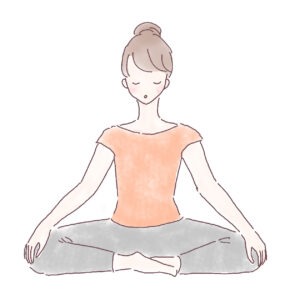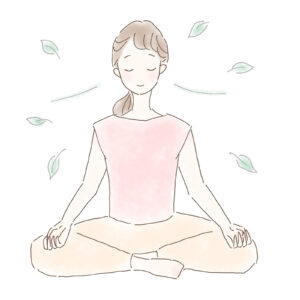
Settle into a comfortable position. Sit with your back straight, but relaxed. If doing so is comfortable for you, close your eyes. Otherwise, leave them open with a soft gaze that rests somewhere a short distance in front of you.

Breathe naturally. Notice the sensations of the breath coming in and going out. Pick a spot where the sensations are prominent (e.g., tip of the nose, in the nostrils, rise and fall of the belly) and rest your awareness there.

Thoughts will arise. This is normal. When you notice you've gotten lost in thought, gently return to the sensations of the breath. Getting lost is not a failure. Rather, each return to the breath is a success. Repeat for the duration of your sit.





